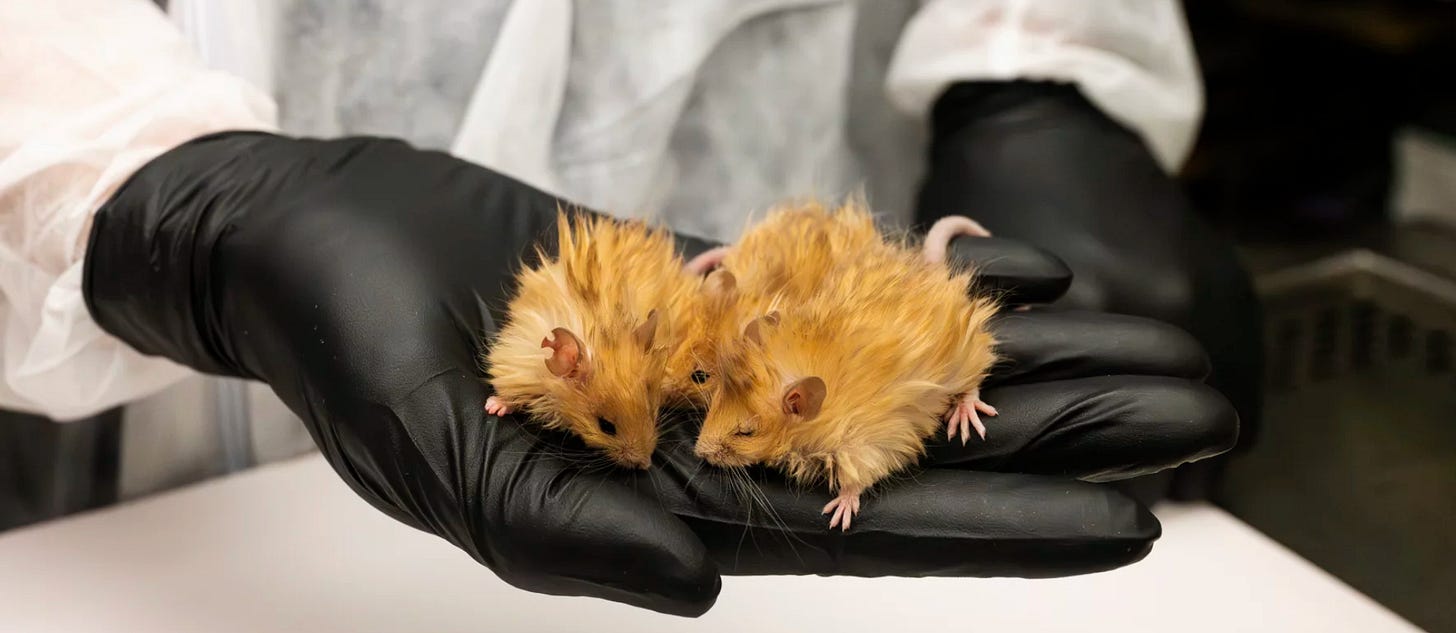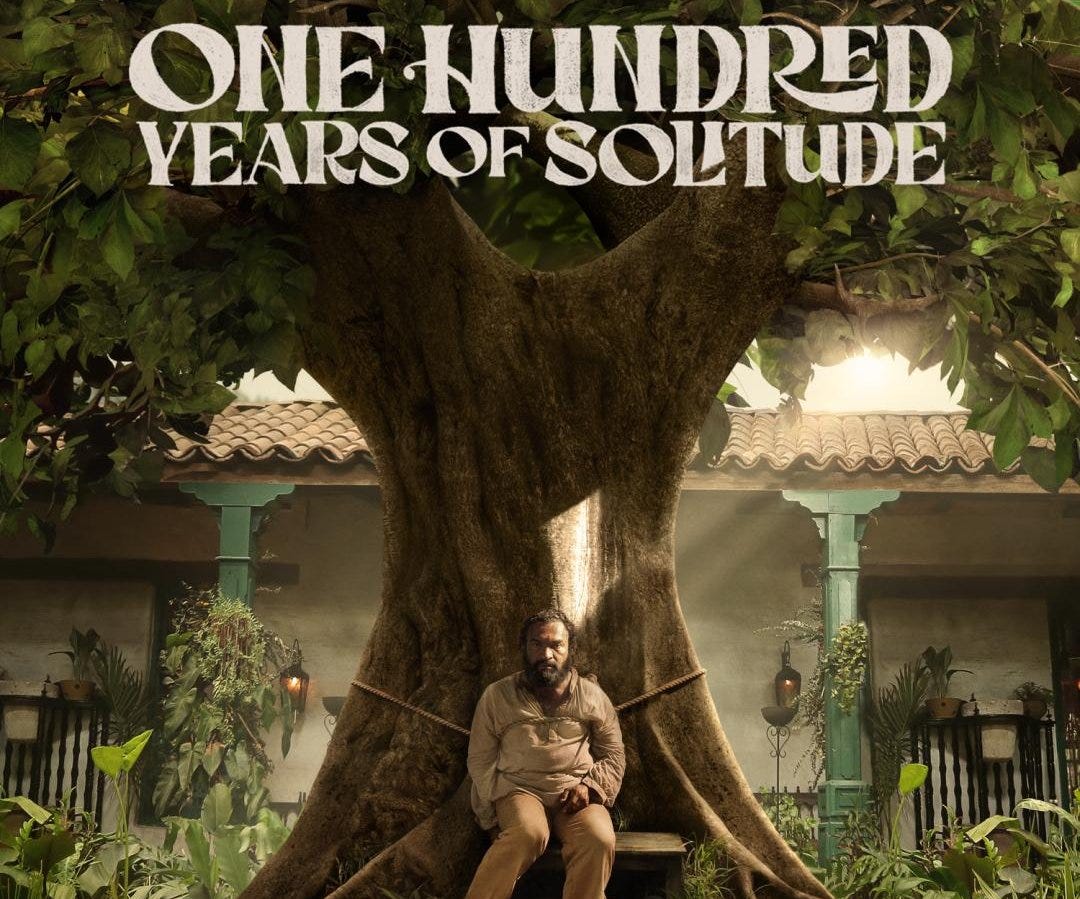Top Reads: March 2025
The future of product teams, art as therapy and bioengineered woolly mice.

Every month, I curate the best content in tech and social impact – with a few takes here and there. My goal is to help us process the fascinating, resilient and beautiful world we share.
1. A Vision For Product Teams
SVPG | 5 minutes

The legendary Marty Cagan explores how product teams may evolve in the next 3-10 years. In short: recent advances in AI will enable teams to take on broader scope, differentiate with discovery (vs. delivery), and get sh*t gone with fewer people per squad.
“The benefits include product teams that more consistently generate improved outcomes and innovation, have much greater autonomy and speed, and most importantly for the people involved, increased job satisfaction. The drawbacks are that if this vision becomes a reality, there will be a dramatic disruption to much of the tech workforce. There will be many people in largely process-oriented roles where their position is no longer necessary. There will be many more people that will be forced to either upskill, or to change careers.”
2. What Type of Experimentalist Are You?
Ness Labs | 3 minutes
We all have different approaches to curiosity. Embrace tiny experiments in your life and learn from them.
“If you approach impact with an experimental mindset, you recognize that the “lone genius” is a myth and that we grow better by sharing our learning journey. You know the value of unlocking social flow, learning in public, and engaging in generative work that benefits your communities in the here and now, versus focusing on the elusive concept of long-term legacy.”
3. Huh? The valuable role of interjections
Knowable | 7 minutes
Language is complex, but the simplest words often say the most. Interjections can also be very helpful in user research - and for active listening in general.
“But these little words may be much more important than that. A few linguists now think that far from being detritus, they may be crucial traffic signals to regulate the flow of conversation as well as tools to negotiate mutual understanding. That puts them at the heart of language itself — and they may be the hardest part of language for artificial intelligence to master.”
3. Building Lovable: $10M ARR in 60 days with 15 people | Anton Osika (CEO and co-founder)
Lenny's Podcast | 68 minutes
Small teams building AI startups are poised to break the internet.
“The bottleneck for most products these days is not going to be as much on engineering, but having good taste, good intuition about your users. And that, engineers and everyone preferably in the team should have that willingness at least to want to go through that motion and listen to the users and truly understand what they care about.”
4. Measuring AI Ability to Complete Long Tasks
METR | 8 minutes
This methodology could measure how agentic AI evolves. How long before our complex tasks will be automated in the first pass? A prompt like "book my vacation" or "plan my wedding" is complex, nuanced and deeply personal. These tasks will require a human-in-the-loop process - and agents are getting there fast.
“We find that measuring the length of tasks that models can complete is a helpful lens for understanding current AI capabilities This makes sense: AI agents often seem to struggle with stringing together longer sequences of actions more than they lack skills or knowledge needed to solve single steps. Current frontier AIs are vastly better than humans at text prediction and knowledge tasks. They outperform experts on most exam-style problems for a fraction of the cost. With some task-specific adaptation, they can also serve as useful tools in many applications. And yet the best AI agents are not currently able to carry out substantive projects by themselves or directly substitute for human labor. They are unable to reliably handle even relatively low-skill, computer-based work like remote executive assistance. It is clear that capabilities are increasing very rapidly in some sense, but it is unclear how this corresponds to real-world impact.”
5. AI Slop Is a Brute Force Attack on the Algorithms That Control Reality
404 Media | 8 minutes
This article explores where social content is going. The future it considers is already here: infinite loops of AI-powered, hyper-niche clickbait content mixed with generative ads that fold right in. Take a break and maybe read a book.
“The best way to think of the slop and spam that generative AI enables is as a brute force attack on the algorithms that control the internet and which govern how a large segment of the public interprets the nature of reality. It is not just that people making AI slop are spamming the internet, it’s that the intended “audience” of AI slop is social media and search algorithms, not human beings. What this means, and what I have already seen on my own timelines, is that human-created content is getting almost entirely drowned out by AI-generated content because of the sheer amount of it. On top of the quantity of AI slop, because AI-generated content can be easily tailored to whatever is performing on a platform at any given moment, there is a near total collapse of the information ecosystem and thus of "reality" online. I no longer see almost anything real on my Instagram Reels anymore, and, as I have often reported, many users seem to have completely lost the ability to tell what is real and what is fake, or simply do not care anymore.”
Check out my favorite newsletter discovery tool, The Sample.
Each morning, The Sample sends you one article from a random blog or newsletter that matches up with your interests. When you get one you like, you can subscribe to the writer with one click. And your clicks also help The World Processor grow.
6. How Covid Remade America
NYT | 17 minutes
How did we get here? This article presents a compelling argument that Covid shifted the American psyche. It was always a 5-10 year journey.
“We’d taken for granted that health emergencies like this one were a thing of the past. It was deeply unsettling to realize that our modern, wealthy world was no fortress against contagion, mass death and pandemic hysteria of various kinds. The end of the end of history has been declared countless times since 2001, but no event punctuated the point as clearly as Covid-19. The emergency began at a time of geopolitical uncertainty, but it ended in an unmistakable polycrisis: beyond Covid, its supply shocks and inflation surge, there was a debt crisis and an ongoing climate emergency, wars in Europe and soon the Middle East and renewed great-power conflict with China. At home the horizon flickered with the digital shimmer of an A.I. future, and accelerationists set about bringing it into being rather than succumb to pandemic privation or postpandemic stagnation.”
7. Art as therapy: Swiss doctors prescribe museum visits
Reuters | 2 minutes
Art and curious discovery can be healing, proving that mindset matters.
“Authorities say the idea came from a 2019 World Health Organization study exploring the role of the arts in promoting health and dealing with illness. During COVID-19 lockdowns, museum closures hit people's well-being, said Julie Courcier Delafontaine, head of the city's culture department.”
8. Hoping to revive mammoths, scientists create 'woolly mice'
NPR | 4 minutes
First up, mice. Then, mammoths. Before we know it, Jurassic Park. Let's be careful here.
“The researchers used the latest genetic engineering techniques to make a combination of modifications based on what they found in the mammoth genomes and in mouse DNA in the hopes the changes would produce the desired attributes in the offspring. And the experiment appears to have worked.”
9. Inside Disney's Secret Test Lab
YouTube | 11 minutes
An inside look at how Disney imagineers create magic in their parks.
“The point of all of the tech that I saw today is not to be useful. It’s not to make your life more convenient or to help stay alive longer. It’s to help make sure that while you are alive you get the chance sometimes to just be a kid. It’s a reminder of how important it is to find ways to just feel joy.”
10. You’ve heard of the Big Bang. Now astronomers have discovered the Big Wheel – here’s why it’s significant
The Conversation | 5 minutes
Scientists continue to observe distant galaxies that challenge long-held beliefs in astronomy. The more we see, the less we know for sure.
“Our detailed JWST observations show that the Big Wheel is comparable in size and rotational speed to the largest “super-spiral” galaxies in today’s universe. It is three times as big in size as comparable galaxies at that epoch and is one of the most massive galaxies observed in the early cosmos.”
Bonus: Greening the Solar System
Asterisk Mag | 9 minutes
This technical read on how we might terraform other worlds is fascinating. The tech is progressing, though it would still take enormous amounts of money, effort and time. Let’s keep exploring, but be sure to focus on planet A.
“The possibilities for how we might do this range widely, from terraforming Mars (and possibly other planets or moons) to generating habitable bubbles on free-floating asteroids. While technological challenges remain, many of these techniques appear surprisingly feasible — making a detailed assessment of their merits all the more important.”
The World Processor is free, but pizza sure isn’t! If you liked this issue, buy me a slice.
Nerd Notes
One Hundred Years of Solitude is the recent film adaptation of the acclaimed novel. Featuring magical realism and universal themes, the show is best enjoyed in it’s original Spanish. I’ve only just started it, but am excited to revisit the story.
‘Til next month,
Garrett













